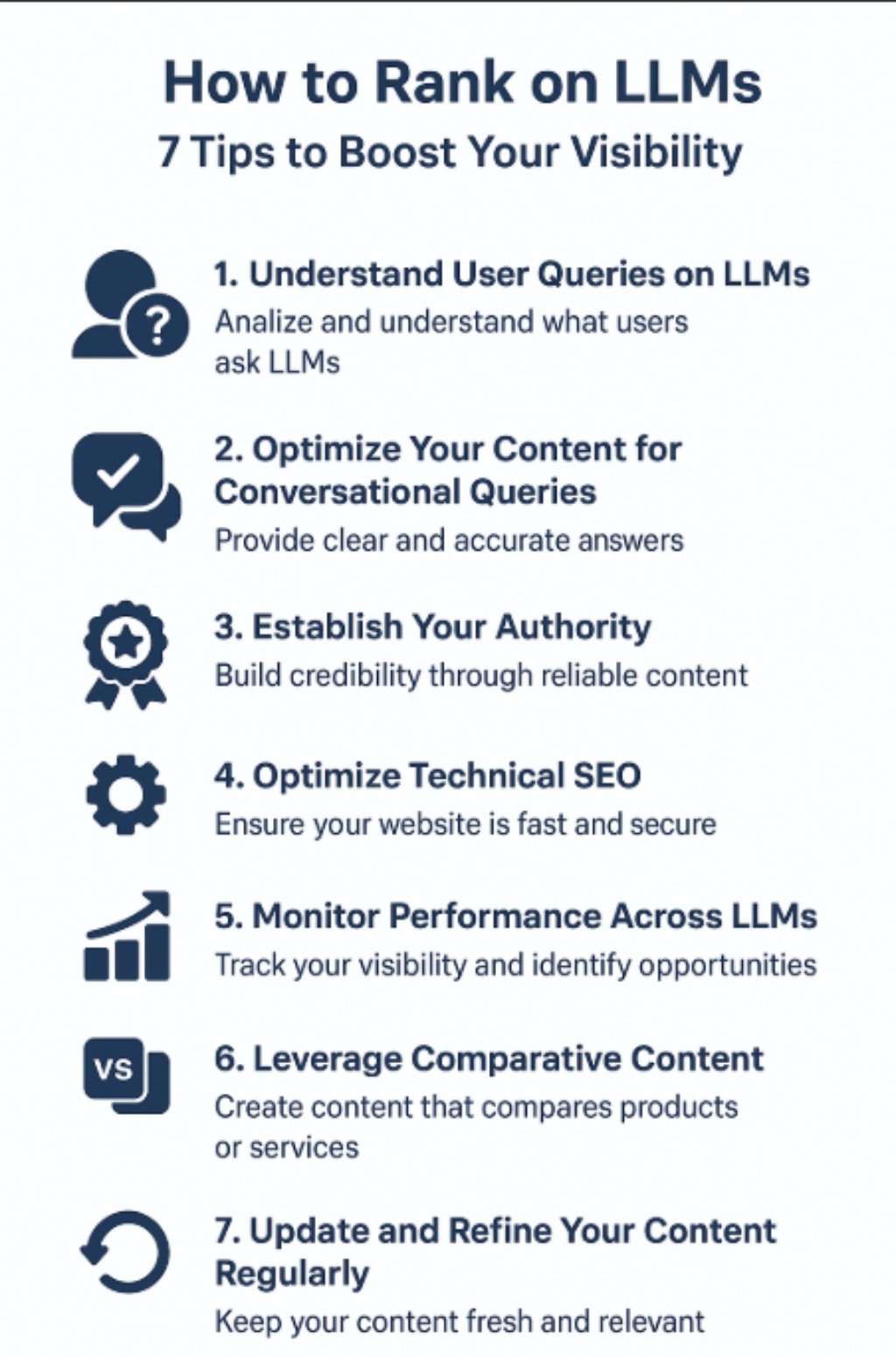In today’s digital landscape, Large Language Models (LLMs) like ChatGPT, Perplexity, and Claude are not just AI tools—they are powerful search engines in their own right. For businesses and content creators, understanding how to rank on LLMs is becoming essential to reaching new audiences. Here are seven practical tips to improve your visibility and rankings on these platforms.
- Understand User Queries on LLMs
The first step is understanding what users ask LLMs. Unlike traditional search engines, LLMs encourage conversational, detailed queries. People often ask comparative or decision-oriented questions, such as “Which is the best X?” or “Brand A vs Brand B.” Analyzing these types of queries helps you create content that directly addresses users’ needs. Tools like Qwairy allow you to discover the most frequent LLM questions related to your niche, giving you a head start in content planning. - Optimize Your Content for Conversational Queries
Once you know what questions users ask, your content must provide clear, concise, and accurate answers. LLMs prioritize authoritative, well-structured content. Break down complex topics into digestible sections, use bullet points for clarity, and address multiple angles of a query. Remember, your content should feel like a conversation, anticipating follow-up questions users might ask next. - Establish Your Authority
LLMs tend to favor content from trusted and authoritative sources. Build your credibility by referencing reliable data, linking to reputable websites, and demonstrating expertise in your field. Creating in-depth articles, guides, and case studies can strengthen your authority and make LLMs more likely to reference your content. - Optimize Technical SEO
Technical optimization is still crucial for LLM visibility. Ensure your website is fast, mobile-friendly, and secure. Structured data markup helps LLMs understand your content contextually, while clean URLs and optimized meta descriptions improve the likelihood of your content being suggested in AI responses. - Monitor Performance Across LLMs
Tracking your visibility on LLMs is essential. Tools like Qwairy or Bing Webmaster Tools can help you monitor which queries your content ranks for and identify opportunities for improvement. Unlike traditional search engines, LLMs update their recommendations based on real-time data and interactions, so continuous monitoring is necessary. - Leverage Comparative Content
Comparative queries are common on LLMs. Create content that directly compares products, services, or strategies relevant to your audience. Examples include “Product X vs Product Y” or “Best tools for task Y.” Such content is highly valuable because it aligns with how users interact with LLMs—seeking guidance before making decisions. - Update and Refine Your Content Regularly
LLMs value fresh and relevant content. Regularly updating your content to include new insights, trends, or data ensures it remains competitive. Review user feedback, analytics, and new queries to refine existing articles or create additional content addressing emerging questions.
By implementing these seven strategies, you can significantly enhance your chances of ranking on LLMs. Understanding user behavior, optimizing content, and maintaining authority are key pillars to ensure your brand or website becomes a reliable source in AI-driven search environments.
For more detailed strategies on positioning yourself effectively on LLMs, visit Qwairy’s guide.

